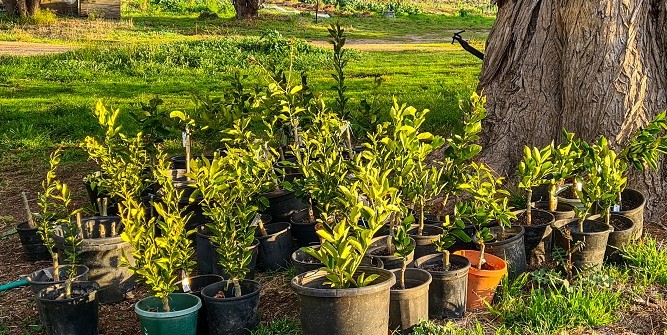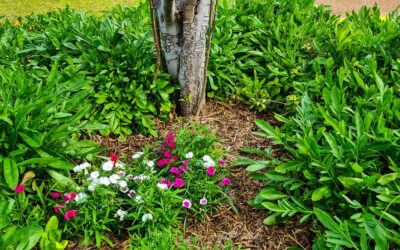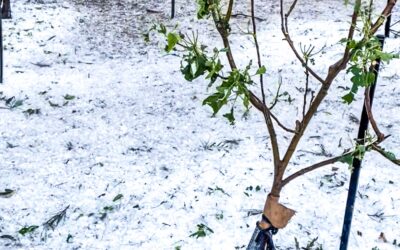Estimated reading time: 6 minutes
If you’re planning to buy fruit trees to plant in your garden, you can do it in two ways. Many nurseries (like our on-farm nursery) offer online sales.
Searching and buying online has a lot of benefits. You can hunt specific varieties that you’re looking for, find rare and unusual trees, and find specialty trees like multigrafts and heritage varieties.
Related Articles
What should you grow under your fruit tree?
Growing edible and flowering plants under your fruit tree makes best use of the space plus helps to keep your tree healthy.
Inspiration for what to grow under your fruit trees
If you want to grow a diverse understory under your fruit trees, these examples will fill you with inspiration.
Eeek – hail on my fruit trees!
Hail at the wrong time of year can severely damage your fruit or your trees – but can you do anything to prevent it?
Online nurseries also usually list a lot of extra information about the trees. It can be a great way to find out what pollinators you need, ripening dates, and even what the fruit tastes like.
The second way to buy your fruit trees is in person, from a nursery. and if you’re doing that, there are a number of things to look out for to make sure you take home the best tree.
So, how you can tell if you’re buying a good tree? What determines whether a tree is healthy, and what should you look for?
Giving your garden the best start by selecting good trees
There are a number of things you can do to give your fruit trees the best possible start in life. Buying a good tree is the first step.
Most nurseries are reputable, and most trees you buy are in excellent condition. However, there are still things to look for to help you choose the healthiest trees available.
Check the health of the roots
The roots should look moist, and not dry. Be especially careful buying bare-rooted trees at markets, for example. They may have had their roots exposed for long periods.
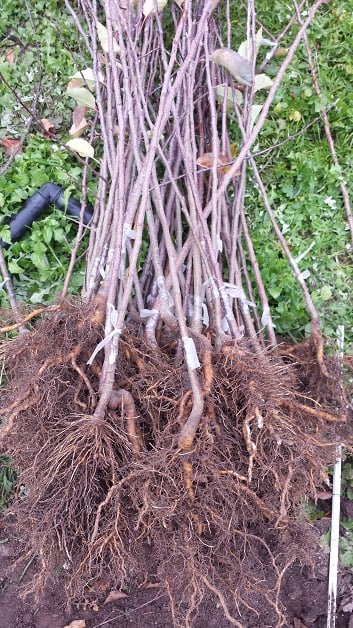
If you buy fruit trees at a market, make sure the roots haven’t been allowed to dry out
Even if the roots look nice and damp when you buy them, it’s worth asking a couple of questions. Check how long it is since they were harvested from the nursery where they were grown.
It’s also worth asking how the trees are managed between markets.
Trees may be taken to multiple markets before they’re finally sold. If they’re sitting in the open with their roots exposed each time, there’s a high risk they will have dried out at some point, even if they’re ‘heeled in’ (i.e., covered with something like sawdust to keep the roots moist) between markets.
Find out how old the tree is
Check the age of the tree. This is a particularly good question to ask if you’re buying fruit trees in pots.
Deciduous trees are normally sold as “bare-rooted”, which literally means the roots are bare. However, if they’re not sold, they may be put into a pot and carried over to the following season. Unfortunately, those trees may then be sold after the ideal time for transplanting them.
Deciduous fruit trees should only be transplanted in winter, while they are dormant. Planting them during spring or summer when they have leaves on them can massively increase the risk of transplant shock.
What chemicals have been used?
Unfortunately, most nurseries can’t answer this question, but it’s still worth asking! Many nurseries source their trees from a number of different commercial growers.
It may surprise you to know that commercial fruit tree nurseries tend to use a wide array of chemical fungicides and pesticides. Plus, they’re often using herbicides as well to kill the weeds growing around the trees. One nursery we asked used 7 different chemicals on their trees!
These chemicals may end up in the bark and buds of the trees. There’s also a good chance the soil won’t have been managed organically. The trees may also have been fed with artificial fertilisers.
Does this mean the fruit from those trees will have chemicals in it?
Well, we wouldn’t recommend eating the fruit from trees that have been grown with heavy chemical inputs for at least the first year. However, you may not be missing out on any productivity. We reckon it’s a good idea to remove any fruit from trees in the establishment pruning phase anyway.
What’s important is that you grow the tree organically when you get it home. If you look after the soil, it’s quite possible to convert the tree to being organic after a couple of years.
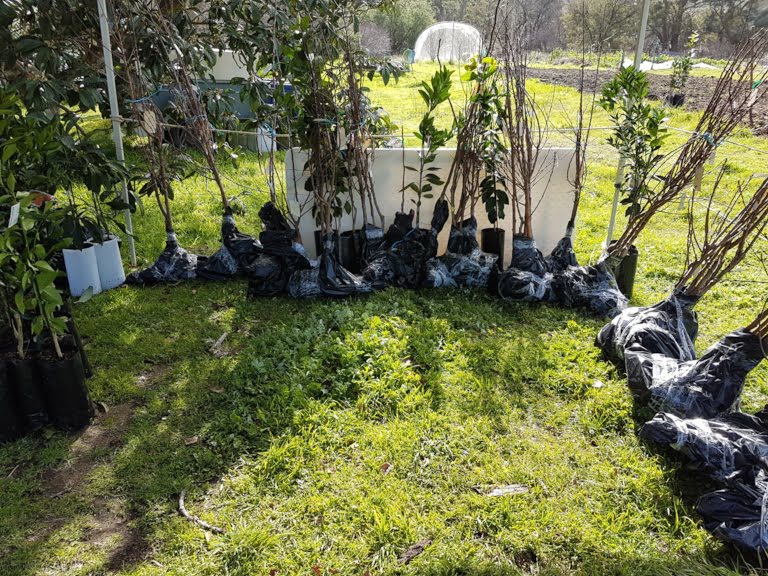
Other things to watch out for when buying fruit trees
Are the buds healthy? Have a look at the buds. This is particularly important around the parts of the tree where you’ll be pruning to create the shape you desire. If a number of buds have been damaged in transit or while the tree is in the nursery, this may have an impact on the shape of the tree you will be able to grow.
How much did the tree grow last year? This is a good indication of health. Starting at any growing tip, follow the wood back to an obvious join in the wood where it connects with two-year-old wood. The length of this growth indicates how well the tree grew last summer. If it’s very short, it might be a sign that the tree is stunted and possibly not healthy.
Does the bark look healthy and free of disease? Particularly check for galls, open wounds, or cankers. Any of these can be a sign that the tree is carrying a disease.
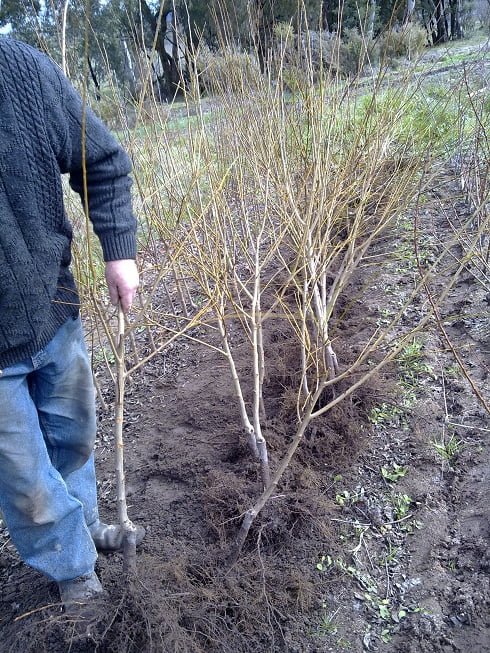
Looking after your trees when you take them home
When you get your trees home, ensure the roots are kept moist and covered until you plant them. Water the roots to make sure they’re nice and damp first. Then cover them with a garbage bag, wet newspaper, or a tarp.
If you don’t have time to plant your trees within a day or two, you can use a method called ‘heeling in’ to keep them in good condition.
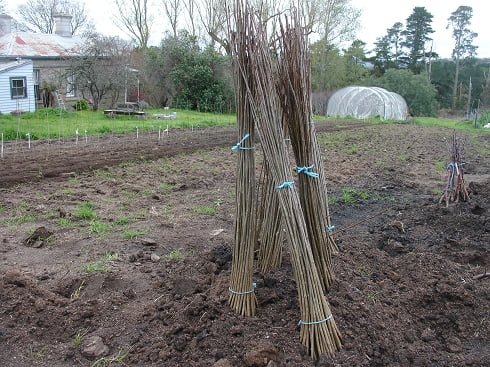
The next step in the journey of giving your tree the best start in life is planting it the right way.
Choosing a healthy tree at the nursery is just the start of the journey to growing a tree that will be happy and productive for the rest of its (and your) life!
Related Articles
What should you grow under your fruit tree?
Growing edible and flowering plants under your fruit tree makes best use of the space plus helps to keep your tree healthy.
Inspiration for what to grow under your fruit trees
If you want to grow a diverse understory under your fruit trees, these examples will fill you with inspiration.
Eeek – hail on my fruit trees!
Hail at the wrong time of year can severely damage your fruit or your trees – but can you do anything to prevent it?

